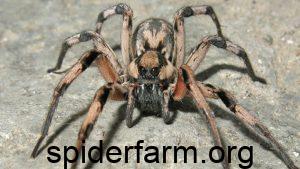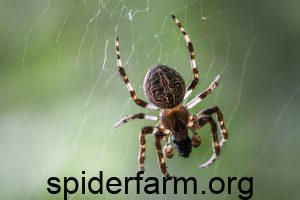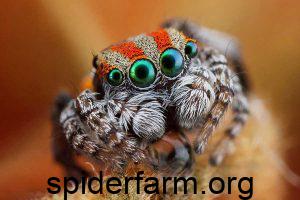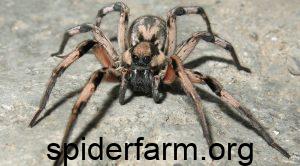Spiders are small eight-eyed creatures that many people fear. But the world of these lovely creatures is full of surprises. Even the 14th of March every year is dedicated to their rescue
Maybe you haven’t realized how useful spiders are until now. These creatures are considered as one of the wonders of nature and with their various capabilities, they have also involved scientists. Follow us by reading a selection of the strangest tips related to spiders
25 interesting facts from the world of spiders
population

There are about 38 thousand different species of them. Scientists believe that this number could be higher, but have not yet been discovered. They are found all over the Earth except the North and South Poles. According to statistics, one million spiders can be found in every one hectare of land. This figure reaches three million in tropical regions
Beneficial effects
Spider is a vital creature to maintain the health of any ecosystem. These creatures feed on harmful insects, help pollinate plants, and recycle dead animals and plants. They are also a valuable food source for many small mammals and birds
The ability to produce yarn
All spiders have the ability to produce webs, but this does not necessarily mean that all of them make spider webs
Biological category
Spiders are commonly mistaken for insects. This is while they do not have tentacles at all like ants to be included in this category. In fact, these creatures are in the category of arthropods
How to move
Another interesting point is that they only use their four legs when moving. In such a way that their four feet are always on the ground and the other four are in the air
vegetarianism
Vegetarianism is not only popular among humans! Bagheera kiplingi species is a type of spider that only feeds on plants
Blood color

Their blood is blue. In humans, oxygen binds to hemoglobin, a molecule that contains iron and makes blood red. But in spiders, oxygen binds to hemocyanin, a molecule containing copper and iron. That is why their blood is blue
Muscles
The muscles of the spider’s leg are only stretched inwards and actually do not have the ability to stretch outwards. For them to be able to move, a kind of hydraulic system helps them to move
In this way, there is a fluid in their body that is pumped towards the legs, thus directing their legs outwards. This is why a dead spider always has its legs folded inwards due to the drying of this liquid in its body
Dimensions
The largest spider is called Golitah (Theraphosa blondi), which is about 27.5 cm long. Meanwhile, the smallest spider is called Patu marplesi, ten of them together will be the size of a pencil
Name origin
The name spider is derived from sphithra in English, which is related to the word Spinne in German. The original meaning of this word is “web weaver”
Body structure
While the muscles of the human body are placed on the outside around their skeleton, the muscles of the spider are located on the inside of their body. The exoskeleton of spiders is located outside their body to protect the muscles
Overcoming gravity

Spiders that are able to walk on different levels, even in the opposite direction of the earth’s gravity, like house spiders, their legs are covered with fine hairs that are effective in doing this. Those who don’t have these hairs on their feet can even easily slide on the glass surface
Tar strength
The web that is made in the spider’s body is liquid and hardens in the vicinity of air and becomes solid. Although the thickness of these wires is very small, they are comparable to steel in terms of hardness tolerance and resistance
By comparing the web of these creatures to a pencil, their power can be considered equal to stopping a Boeing 747. It is also interesting to know that the design of each spider’s web is different from another
life span
The average life of spiders is one to two years, but some of their species live for more than 20 years
Types of hunting methods
Although spiders make a new web everywhere, some of them eat their previous webs to make a new web. Instead of using webs, some produce sticky gum and shoot at their prey
Vision
Most spiders have eight eyes (or sometimes less), but their vision is very poor. They are myopic and are unable to recognize anything that is far away from them
Feeding method
Spiders do not have teeth and therefore cannot chew food. Instead, they inject a digestive fluid into the food they want to eat and then suck it up
Non-social creatures
Some male spiders give dead flies to female spiders. Others dance to attract the attention of female spiders. But in general, most spiders are solitary creatures and are found only to mate with other spiders
jumper
The jumping type of these creatures can jump 40 times its body length. This is not due to the strength of their muscles, but by contracting their abdominal muscles, they collect the fluid that causes their legs to open and release it once in the legs with pressure
Old beliefs
Hundreds of years ago, people used spider webs on their wounds to stop bleeding

They used Scientists’ research has shown that vitamin K in the web of these creatures will reduce bleeding
The efforts of scientists
Scientists at the US Department of Defense are trying to make bulletproof vests based on the golden silk orb-weaver spider web
Mother Spider
A female spider is capable of laying 3,000 eggs, but except for the Wolf type, which carries its young on its back, all mother spiders leave their offspring alone
Black Widow Type
The black widow spider mates only once in her life and after that, she is able to lay eggs for the rest of her life. This spider sometimes swallows and feeds on the male spider after mating. Also, the black widow is in the category of poisonous spiders. The venom of this spider is 15 times stronger than that of a rattlesnake
Greek stories
According to Greek mythology, a girl named Arachne used to make beautiful weaves, and Athena became jealous of her and turned her into a spider
Body skeleton
Spiders do not have bones. They have hard tissues called Exoskeleton, which acts as a protective vest for them















